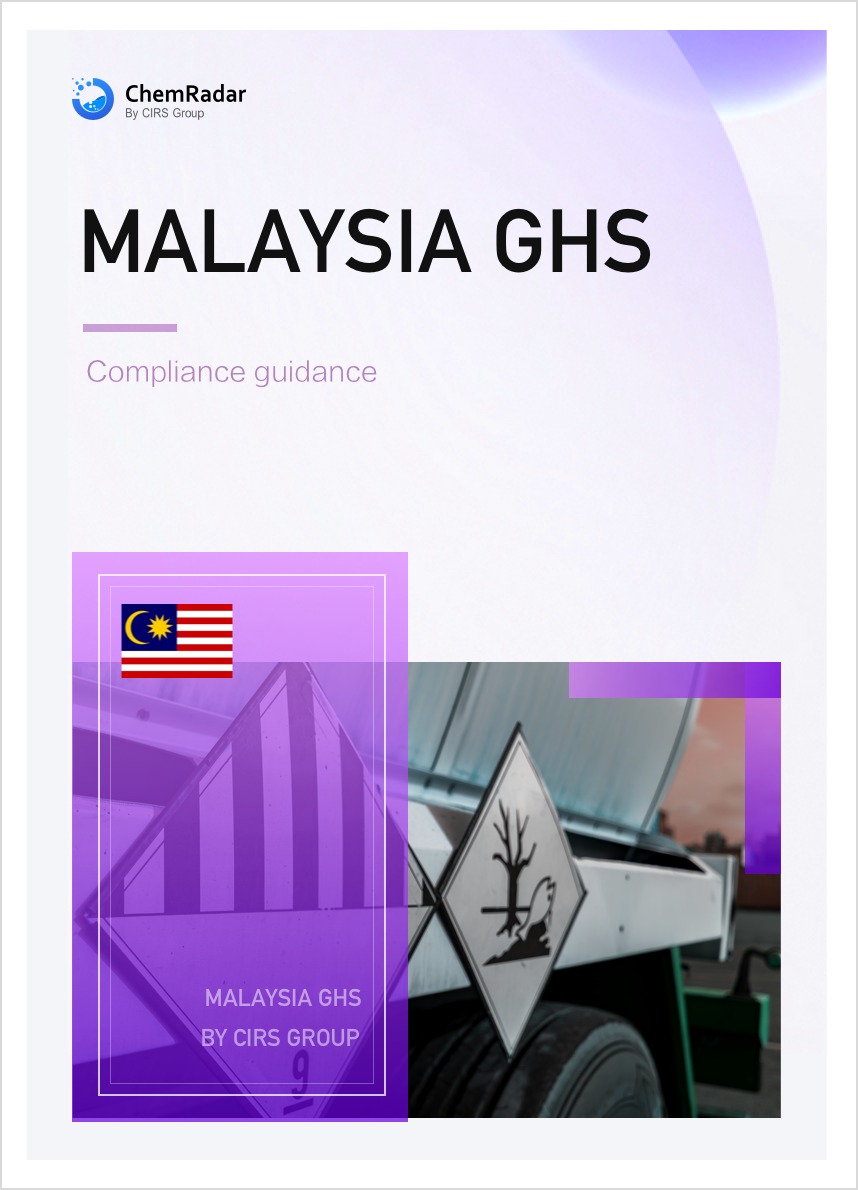4. GHS Safety Labels Requirements in Malaysia
According to the requirements of Part IV of the Class Regulation 2013, GHS safety labels and indelibly containing the following information:
(a) Product identifier (shall match with in the SDS);
(b) Supplier identification;
(c) Signal word;
(d) Hazard statement (Container or package ≤125 mL can be omitted);
(e) Hazard pictogram, the size is one fifteenth of the surface area of the label but the minimum area is not less than 100 mm2 (10 mm x 10 mm), if the hazard pictogram GHS01 shall be used and the use of the hazards pictograms GHS02 and GHS03 shall be optional (excluding self reactive chemical type B and organic peroxide type B);
(f) Precautionary statement (Container or package ≤125 mL can be omitted);
(g) Statement which reads: “read Safety Data Sheet before use” (Applicable for container or package ≤125 mL, regular packaging can be omitted from writing);
(h) Local emergency telephone number (24 hours) in Malaysia (including area code). If the hazardous chemical is imported, the foreign manufacturer’s contact number (24 hours) may be included for advice during an emergency;
(i) Letter and numeral are to be in print and the font size shall not be smaller than 7 points, the letters and numerals shall be black in colour;
(j) Use the national language and English language.
If the substance is included in the list of classified chemical in ICOP CHC 2014 section 1, the name on the list should be given priority for identification. The product identifier for a mixture shall be the trade name of the designation of the mixture. The difference from SDS is that not more than 6 precautionary statements shall appear on the label, unless necessary to reflect the nature and the severity of the hazards. Redundant information may be omitted. Where a hazard classification results in duplicate precautionary statements, the information shall only appear once.
 Example of General Labels
Example of General Labels
 Example of label for small packaging (≤125mL)
Example of label for small packaging (≤125mL)
With the update and modification of the UN GHS regulation, Malaysia's classification lacks desensitized explosives, inhalation hazard category 2, flammable gases (chemically unstable gases A/B, ignition gases), etc. In order to comply with the latest UN GHS requirements, on 13th June 2022, DOSH issued a proposal to revise the Class Regulation 2013 and has completed soliciting public opinion (as of 15th August 2022).
Proposed amendments to CLASS Regulations 2013:
1) SDS
Updated SDS to be supplied within 6 months of update, with the same requirement for labeling. Previously is as soon as practicable without specifying a time limit.
2) Label
Requirements for containers of 125 ml in size extended to 250 mL;
Changes in hazard classification to be update in labels in 6 months. Compared to the original 3-month requirement, the deadline has been extended by twice the time;
Requirements for label dimensions based on surface area. And as a result, the detailed label size table in Annex 4 of the regulation has been refined (See table below).
| Content of the Packaging |
Dimension of Labels (in millimetres) |
| Not exceeding 3 litres |
If practicable, at least 52 x 74 |
| Greater than 3 litres but not exceeding 50 litres |
At least 74 x 105 |
| Greater than 50 litres but not exceeding 500 litres |
At least 105 x 148 |
| Greater than 500 litres |
At least 148 x 210 |
Dimension of label (now)
| Content of the Packaging |
Size of label (in mm2) |
Pictogram dimensions |
| Not exceeding 3 litres |
If practicable, at least 3850 mm2 |
At least 10 mm x 10 mm |
| Greater than 3 litre sbut not exceeding 50 litres |
At least 7770 mm2 |
At least 23 mm x 23 mm |
|
Greater than 50 litres but not
exceeding 500 litres |
At least 15540 mm2 |
At least 32 mm x 32 mm |
| Greater than 500 litres |
At least 31080 mm2 |
At least 46 mm x 46 mm |
Dimension of label (amendment)
3) Classifications
Addition of two hazard classes: Chemicals under pressure (Category 1-3) and Desensitized explosives (Category 1-4);
Updating hazard categories for Flammable gases;
Flammable aerosols change to aerosols, adding Aerosols Category 3;
Adding Skin corrosion or irritation Category 3;
Dividing Serious eye damage or eye irritation Category 2 into 2A and 2B;
Updating Respiratory sensitization / skin sensitization Category 1 to 1A and 1B;
Update of cut-off value for Aspiration hazard from >=10% to >=1%.
This proposal aims to alignment with UN GHS Rev. 8. Malaysia will soon release a new version of GHS regulatory documents.
Appendix
- Industry Code of Practice on Chemical Classification and Hazard Communication 2014.pdf
- OCCUPATIONAL SAFETY AND HEALTH ACT 1994 (Act 514 or OSHA 1994)




